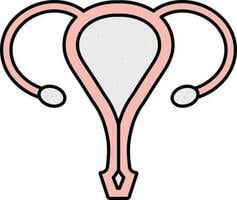Restoring Pelvic Health and Function
Restoring Pelvic Health and Function

Introduction
Hysterectomy, the surgical removal of the uterus, is a common procedure performed to treat various gynecological conditions. While hysterectomy can be a beneficial intervention for certain medical conditions, it can also have an impact on the pelvic floor, leading to potential changes in pelvic floor function and symptoms. In this article, we will explore the importance of pelvic rehabilitation post-hysterectomy, why it is needed, the surgical procedure itself, and the potential impact on the pelvic floor.
I. Understanding Hysterectomy:
A. Surgical Procedure:
- Hysterectomy involves the removal of the uterus through different surgical approaches, including abdominal, vaginal, or laparoscopic methods.
- The procedure may also involve the removal of other structures, such as the cervix, ovaries, or fallopian tubes, depending on the underlying condition and the patient's needs.
B. Common Indications for Hysterectomy:
- Conditions that may require a hysterectomy include uterine fibroids, endometriosis, adenomyosis, uterine prolapse, abnormal uterine bleeding, and gynecological cancers.
- The decision for a hysterectomy is typically made after a thorough evaluation and consideration of alternative treatment options.
II. Impact on the Pelvic Floor:
A. Pelvic Floor Support:
- The uterus provides support to the pelvic floor muscles and ligaments. Its removal can potentially weaken the pelvic floor support system.
- The loss of uterine support may contribute to symptoms such as pelvic organ prolapse, urinary incontinence, bowel dysfunction, and sexual dysfunction.
B. Changes in Pelvic Floor Function:
- The pelvic floor muscles may undergo changes in their resting tone, coordination, and strength after hysterectomy, potentially leading to pelvic floor dysfunction.
- Research has shown that hysterectomy is associated with an increased risk of pelvic floor disorders, including pelvic organ prolapse and stress urinary incontinence.
III. Importance of Pelvic Rehabilitation Post-Hysterectomy:
A. Restoring Pelvic Floor Function:
- Pelvic rehabilitation plays a crucial role in restoring and optimizing pelvic floor function after hysterectomy.
- Through targeted exercises, manual therapy, and education, pelvic rehabilitation can help strengthen and retrain the pelvic floor muscles, improving muscle tone, coordination, and overall pelvic floor function.
B. Managing Pelvic Floor Symptoms:
- Pelvic rehabilitation can help manage and alleviate common pelvic floor symptoms, such as urinary incontinence, fecal incontinence, pelvic pain, and sexual dysfunction.
- Techniques such as biofeedback, electrical stimulation, and manual therapy can be utilized to address specific symptoms and promote recovery.
IV. Components of Pelvic Rehabilitation Post-Hysterectomy:
A. Pelvic Floor Muscle Training:
- Pelvic floor muscle exercises, including kegel exercises, can be prescribed to improve pelvic floor strength, endurance, and coordination.
- A pelvic floor physiotherapist can provide guidance on proper technique, progression, and individualized exercise programs.
B. Education and Lifestyle Modifications:
- Patients can benefit from education on bladder and bowel habits, postural awareness, lifting techniques, and strategies for managing pelvic floor symptoms.
- Lifestyle modifications, such as maintaining a healthy weight, practicing good bowel habits, and incorporating relaxation techniques, can also support pelvic floor health.
C. Manual Therapy and Techniques:
- Manual therapy techniques, such as myofascial release, trigger point release, and scar tissue mobilization, can address tightness, tension, and adhesions in the pelvic region.
- Other modalities, including heat therapy, therapeutic ultrasound, and electrical stimulation, may be used to complement the rehabilitation process.
Conclusion:
Pelvic rehabilitation post-hysterectomy is essential for restoring pelvic floor health, addressing pelvic floor symptoms, and optimizing overall well-being. By engaging in a comprehensive rehabilitation program that includes pelvic floor muscle training, education, lifestyle modifications, and manual therapy, individuals can regain pelvic floor function, alleviate symptoms, and enhance their quality of life. Collaborating with a skilled pelvic floor physiotherapist can provide the guidance and support needed to navigate the recovery process and promote long-term pelvic health post-hysterectomy.


